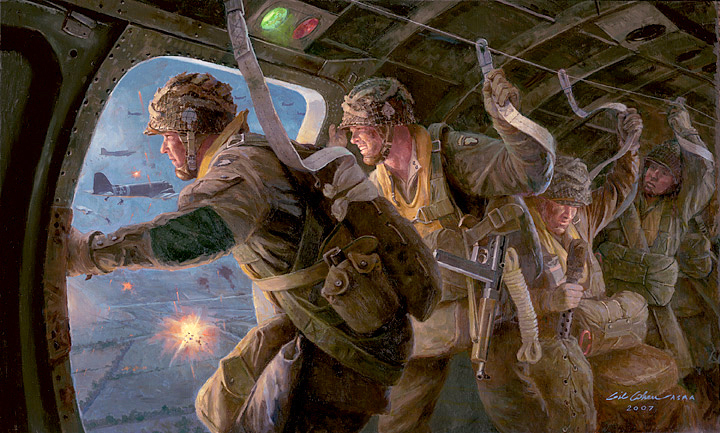


Compass Wrist Liquide Filled 1944 Bastogne
English Translation
 |
Historique Voir ICI
History Click HERE
Traduction de cet article
Cette boussole, connue sous le nom officiel de "Compass, Wrist, Liquid-filled, a été fabriquée par 2 industriels, Magneto Supérior et Taylor.Magneto Superior a poursuivi la fabrications jusque au début des années 1950. Donc le modèle Taylor est plus rare et plus cher.
La boussole est généralement portée au poignet ,mais aussi sur la manche, les boucles d'épaule, sangles, ou à la cheville autour des bottes de saut.
Cette boussole a été distribuée à tous officiers et hommes de troupe, contrairement à la boussole classique qui était normalement réservée aux officiers, sous-officiers ou des hommes pour une mission spéciale.
.
This compass, official known as “Compass, Wrist, Liquid-filled”, was made by two manufacturers, Superior Magneto and Taylor. They are not so rare and are quite easily found on eBay, although the Taylor models seem to be more desirable. I can only guess this is because these were only produced during the war. Superior Magneto continued making them until the early 1950s. So, expect to pay more for a Taylor in pristine condition, with original strap, and with the liquid still inside. As this is one of the few paratrooper items that are still affordable, I don’t see why you should want a replica, except for re-enactment. They have gotten more expensive over the past few years, but the main reason why they are still affordable is that so many are still available. That’s probably because it wasn’t made as an Airborne-specific piece of equipment, but a general issue item, developed by the Corps of Engineers.
The compass is usually seen worn on the wrist (duh!), but also over the sleeve, the shoulder loops, webbing, or at the ankle over the jump boots. Wrist compasses were used both by officers and enlisted men, unlike the lensatic compass, or marching compass, which was normally reserved for officers, NCO’s or men on a special mission.